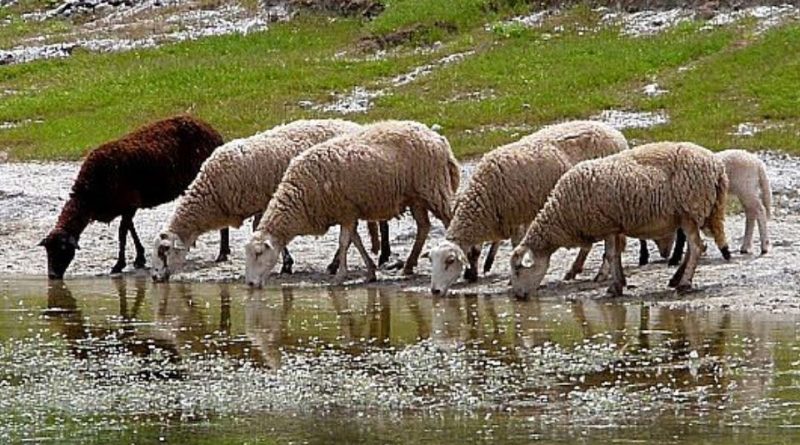Lojena
Lojena
The Lojena is a Spanish sheep (Ovis aries Linnaeus, 1758) with a main aptitude for meat production.
Systematics –
From a systematic point of view it belongs to:
Eukaryota domain,
Kingdom Animalia,
Phylum Chordata,
Mammalia class,
Order Artiodactyla,
Suborder Ruminantia,
Bovidae family,
Subfamily Caprinae,
Genus Ovis,
O. aries species,
Lojena breed.
Geographic and Area Distribution –
The Lojena sheep breed is found in a very specific enclave in the province of Granada, the Loja region, from which it takes its name.
The area is made up of six municipalities that make up the central zone of the western part of Granada; although the herds are mainly spread over three, that of Loja, properly speaking, Zafarraya and Alhama de Granada.
The Lojeña sheep breed is also known as Rabada or Rabuda de la Sierra de Loja.
Origins and History –
The Lojena sheep breed is an indigenous Spanish breed in danger of extinction which has been selected over the years in the mountains of the Loja region, and where it has particularly adapted to the climatic and morphological conditions of the area.
The Lojeña sheep breed owes its toponym to the Granada municipality of Loja, in whose mountains this resistant sheep has developed over the years.
In 2007, the Association of Breeders of the Lojeña Sheep Breed was founded under the name of ACROL. It is a non-profit organization of purebred breeders with 51 members, whose purpose is the conservation, improvement and dissemination of the breed.
Morphology –
The Lojena sheep breed brings together animals with a straight frontal profile, of medium size and proportions with a tendency towards elongation, with broad and deep trunks, and slightly shortened and thin limbs, essential for surviving in the difficult and stony terrains which they tread.
It is possible to find animals with a white coat and a uniform black coat, passing through all the possible combinations ranging from the presence of black, white or brownish spots, or even red in their various shades.
Generally only the males have horns, these are highly developed and open spiral. When females have horns, they are usually atrophic or underdeveloped.
The queue is long.
The height of the male at the withers is 65 cm for a weight of 60 kg; the height of the females at the withers is 60 cm for a weight of 45 kg.
The wool is fine and the extension of the fleece is not very thick.
Productive attitude –
The Lojena sheep is mainly bred for meat production.
The lambs are slaughtered at about 2 months of age, with a live weight of 13 kg.
During the year each ewe has a number of two births with only one lamb.
A production system has been implemented for this breed which covers different lamb formats, depending on the type of market: little lamb, lamb, heavy lamb for export to Arab communities (Lamb Festival, Ramadan).
The breeding system of the breed is extensive, making use of a diet on the municipal pastures of the mountains of the region, characterized by steep terrain, with a large amount of rocks, where cavities proliferate and trees are scarce; factors that have made the Lojeña breed an exceptional hardy sheep and adapted to the difficult terrain it treads on; the breed is grouped in herds ranging from 200 to 1500 head of cattle.
It is important to note that in these mountains the climate offers great contrasts, with temperatures ranging between 14 and 15 degrees, with a difference of 8 degrees between night and day and 4 between the plateau and the low. The grass is poor and scarce, but sufficient to feed a small animal, with the ability to successfully rear a lamb under unfavorable conditions.
Guido Bissanti
Sources-
– Wikipedia, the free encyclopedia.
– Daniele Bigi, Alessio Zanon , 2010. Atlas of native breeds. Cattle, horses, sheep, goats, pigs reared in Italy, Edagricole-New Business Media, Bologna.
Photo source:
– https://www.mapa.gob.es/es/ganaderia/temas/zootecnia/razas-ganaderas/razas/catalogo-razas/ovino/lojena/galeria.aspx#prettyPhoto[pp_gal]/3/

